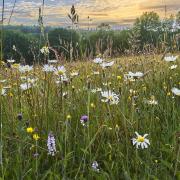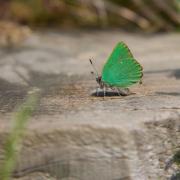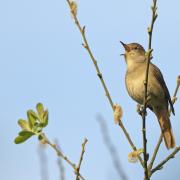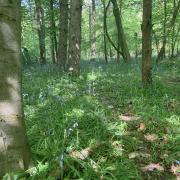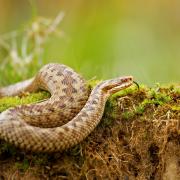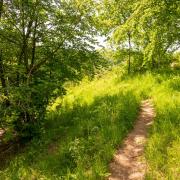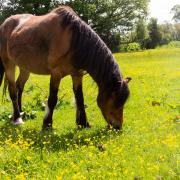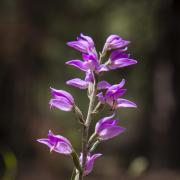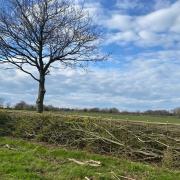Wildlife expert Sean McMenemy gives advice on how we can observe and appreciate one of Britain’s oldest mammals during 'Brocktober'
For many of us, our reference to badgers is associated with beloved characters from our childhood — the wise, old grandfather figures in The Wind in the Willows or The Animals of Farthing Wood: kind, compassionate and dependable. In recent years, badgers might have come to our attention due the badger culling debate.
Whatever our image of badgers, they are part of Britain’s natural history. A study by Yates (1999) found that badgers have been around in Britain for half a million years — it is no wonder that they are depicted as wise old characters.
Around 25% of the European badger population is found in the UK, so we have an international duty to protect them. Today, badgers are protected by law in the UK, which shows what a valued species they are. They are vital to the wider ecosystem — helping smaller animals who use their tunnels, and spreading seeds that help plants to grow and flourish across broad areas.
There is so much we don’t fully appreciate about badgers, and this is why the Badger Trust is urging us to recognise the beauty of this protected species on National Badger Day 2021 and throughout 'Brocktober'.
Sean McMenemy, wildlife expert and founder of badger food suppliers Ark Wildlife, has conducted research on the most likely locations to spot a badger in the UK, and gives his tips on how we can observe them in the wild and safely support them in our own gardens.

How to track down and observe a badger in the wild
Sadly, a lot of people may have seen a badger dead on the roadside, but not many have been lucky enough to spot the elusive creature in the wild. This is largely down to the European badger using its impressive hearing and keen sense of smell to avoid humans (their only real predator).
- First, locate a badger sett. Look out for oval-shaped badger holes and carefully-dug badger latrines nearby.
- Make sure you gain permission from the landowner to watch the badger sett, unless it is located in a public area.
- Don’t wear any perfume as badgers have a keen sense of smell.
- You need to wear dark clothes (including gloves and a hat) so as not to frighten the badgers.
- If you bring a torch to light your path, don’t shine it on the badgers.
- Arrive around an hour before sunset and stay motionless while you wait.
- Don't sit too close to the sett.
- And you’ll need plenty of patience and a comfy cushion to sit on!

Where are the most likely locations in the UK to spot a badger?
Ark Wildlife collected data on the number of badger occurrences in the UK so far in 2021.
Leicestershire came out on top with the most occurrences of living European badgers so far this year at 137, though Gloucestershire came in close at number 4.
Despite being more common in the south of England, badger populations are spread across the whole of the UK, so it will be even more of an achievement to spot them in habitats where they are rarely seen! The top 10 badger hotspots in the UK are:
- Leicestershire
- Surrey
- Hampshire
- Gloucestershire
- Cambridgeshire
- Kent
- Wiltshire
- Derbyshire
- Dumfries and Galloway
- West Sussex
How can we safely help badgers in our own gardens?
On the whole, badgers can live in harmony with humans without any serious conflict. However, badger activity can lead to problems in urban gardens — luckily, there are ways we can prevent this whilst still supporting and appreciating these iconic creatures.
Below are some tips on what you can provide in your garden to help your local badgers, and remember to report incidents back to the RSPCA or your local rescue centre if you see a badger in danger.

What to feed them
- Earthworms generally make up around 80% of a badger's diet, so during times when the ground is solid (a winter frost or a summer heatwave) you can support our British badgers by supplementing their diet with specially formulated badger food, peanut kernels or dried fruit.
- Also make sure there is always fresh, clean water available because supplementary food contains less moisture than their juicy earthworms. It is imperative that you leave any supplementary food for them in small amounts so that they don’t become dependent on you.
- Specialist badger food can dissuade the badgers from causing damage to your homegrown fruit and veg, whilst not encouraging the local social group to become larger than natural levels. Putting out badger food will also keep badgers away from the food you give to your garden birds.
- Remember that badgers are wild animals and have strong claws and jaws, so never approach one, no matter how tempting that might be!
Gloucestershire Wildlife Trust
Gloucestershire Wildlife Trust has been involved in the debate over bovine TB for over 30 years. Visit their website to find out more about the important work they do, including their badger vaccination programme.





